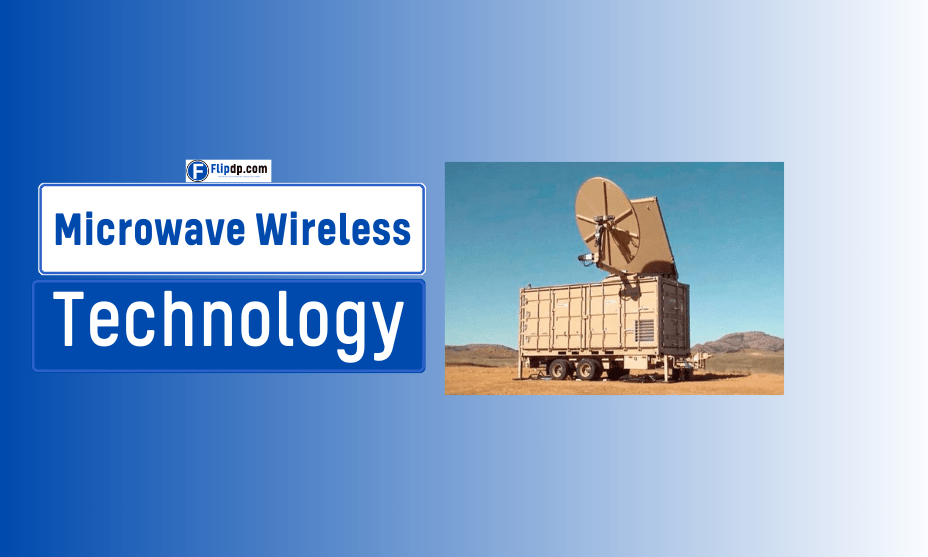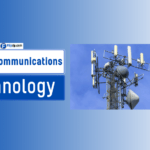Introduction to Microwave Wireless Technology
Imagine a world where vast amounts of data can be transmitted instantly across continents without the need for physical cables. This seamless communication is largely made possible by microwave wireless technology.
From powering our everyday internet connections to enabling critical military communications, Microwave Wireless Technology plays a crucial role in modern society. Understanding its mechanisms, benefits, and limitations is essential for leveraging its full potential and addressing the challenges it presents.
What is Microwave Wireless Technology?

Definition and Basic Principles
Microwave wireless technology refers to the use of microwave radio frequencies (typically ranging from 1 GHz to 300 GHz) to transmit data wirelessly. Unlike lower frequency radio waves, microwaves have shorter wavelengths, which allow for higher data transmission rates and more precise signal targeting. This technology is integral to various communication systems, including satellite communications, cellular networks, and Fixed Wireless Technology, as well as wireless internet services.
How It Works
Microwave wireless technology operates on the principle of electromagnetic wave propagation. Here’s a simplified breakdown:
- Transmission: Data is encoded into microwave signals using transmitters.
- Propagation: These microwave signals travel through the atmosphere in a straight line from the transmitter to the receiver.
- Reception: The receiver captures the microwave signals and decodes the data for use.
Key components involved include microwave antennas, transmitters, receivers, and sometimes repeaters or satellites to facilitate long-distance communication.
Benefits of Microwave Wireless Technology
Microwave wireless technology offers several advantages that make it a preferred choice in various applications:
High Bandwidth and Data Transmission Rates
Microwave frequencies support large bandwidths, enabling the transmission of vast amounts of data at high speeds. This capability is essential for applications requiring real-time data transfer, such as video streaming, online gaming, and high-frequency trading.
Long-Range Communication
One of the standout benefits of microwave wireless technology is its ability to cover long distances. With proper infrastructure, microwave links can span hundreds of kilometers, making them ideal for connecting remote areas, bridging communication gaps between cities, or establishing backbone networks for the internet.
Reliability and Low Latency
Microwave signals are less prone to interference compared to other wireless technologies like Wi-Fi. This results in more stable and reliable connections with lower latency, which is crucial for applications such as financial transactions, emergency services, and real-time monitoring systems.
Cost-Effectiveness
Deploying microwave wireless systems can be more economical than laying extensive fiber optic cables, especially in challenging terrains or densely populated urban areas. The infrastructure required for microwave links is often simpler and quicker to install, reducing overall costs.
Applications of Microwave Wireless Technology
Microwave wireless technology’s versatility allows it to be employed across various sectors. Here are some prominent applications:
Telecommunications
Microwave links are fundamental to the telecommunications industry, serving as the backbone for telephone networks, mobile communications, and internet services. They facilitate the transmission of voice, data, and video between cellular towers and central network hubs.
Broadcasting
Television and radio broadcasters utilize microwave technology to transmit signals from studios to broadcasting towers. This ensures widespread coverage and high-quality signal distribution to end-users.
Internet and Data Networking
Microwave wireless technology enables high-speed internet access, especially in areas where laying fiber optic cables is impractical. It supports wireless broadband services, providing connectivity for homes, businesses, and public spaces.
Military and Defense
In the defense sector, microwave technology is employed for secure communications, radar systems, and satellite links. Its reliability and security features are critical for military operations and national security.
Medical and Scientific Research
Microwave technology is used in various medical applications, such as imaging and diagnostics. In scientific research, it facilitates experiments requiring precise data transmission and control, particularly in fields like astronomy and physics.
Limitations of Microwave Wireless Technology

Despite its numerous advantages, microwave wireless technology has certain limitations that need to be considered:
Line-of-Sight Requirement
Microwave signals generally require a clear line of sight between the transmitter and receiver. Obstacles like buildings, mountains, and trees can obstruct signals, leading to communication disruptions. This limitation necessitates careful planning of microwave link installations.
Susceptibility to Weather Conditions
Microwave frequencies are sensitive to atmospheric conditions. Heavy rain, snow, fog, and other adverse weather phenomena can attenuate microwave signals, causing signal degradation or loss of connectivity.
Limited Frequency Spectrum
The microwave spectrum is finite and subject to regulatory constraints. As demand for wireless communication grows, the available spectrum can become congested, leading to interference and reduced performance.
Interference and Signal Degradation
Microwave signals can be affected by interference from other electronic devices and systems operating in similar frequency ranges. Additionally, physical factors like signal reflection and scattering can degrade signal quality over long distances.
Future Trends in Microwave Wireless Technology
The future of microwave wireless technology is poised for significant advancements driven by the growing demand for higher data rates and more reliable connections. Some emerging trends include:
- 5G and Beyond: Microwave technology will play a crucial role in the deployment of 5G networks and future generations, supporting the increased bandwidth and low latency requirements.
- Integration with Satellite Communications: Enhanced microwave links combined with satellite technology will improve global connectivity, particularly in remote and underserved regions.
- Advanced Modulation Techniques: Innovations in modulation and coding schemes will increase the efficiency and capacity of microwave wireless systems.
- Smart Infrastructure: The integration of microwave technology with smart city initiatives will enable more efficient and intelligent communication networks.
Common Misconceptions About Microwave Wireless Technology
Understanding microwave wireless technology often involves dispelling several common misconceptions:
Microwaves are Only Used for Cooking
While the term “microwave” is popularly associated with kitchen appliances, microwave wireless technology refers to the use of specific radio frequencies for communication purposes. These are entirely different applications of electromagnetic waves.
Microwave Wireless is Obsolete
Contrary to this belief, microwave wireless technology remains highly relevant and continues to evolve. It remains a cornerstone in telecommunications, broadcasting, and other critical industries.
Microwave Signals are Unsafe
There is a misconception that microwave signals are harmful to health. However, the power levels used in microwave wireless communications are regulated and kept within safe limits to prevent any adverse health effects.
Microwave Technology Cannot Compete with Fiber Optics
While fiber optic cables offer higher data transmission rates, microwave wireless technology remains competitive due to its cost-effectiveness, flexibility, and ability to provide connectivity in areas where fiber optics are impractical.
Conclusion
Microwave wireless technology is a pivotal component of modern communication systems, offering high bandwidth, long-range connectivity, and reliable performance across various applications.
From powering the backbone of telecommunications networks to enabling critical military communications and supporting advanced medical research, its versatility is unparalleled.
However, it is not without its limitations, such as the need for line-of-sight and susceptibility to weather conditions. Understanding these benefits and challenges is essential for leveraging microwave wireless technology effectively.
FAQs, Microwave Wireless Technology
1. What is microwave wireless technology?
Microwave wireless technology refers to the use of microwave frequency bands (typically ranging from 1 GHz to 300 GHz) to transmit information wirelessly. This technology enables high-speed communication over long distances and is commonly used in applications such as satellite communications, Wi-Fi, and point-to-point links.
2. How does microwave wireless technology work?
Microwave wireless technology operates by transmitting electromagnetic waves in the microwave frequency range. These waves carry data and can pass through the atmosphere with minimal interference. The data is modulated onto the microwave signal, which is then sent from a transmitter to a receiver, where it is demodulated and converted back into usable information.
3. What are the advantages of microwave wireless technology?
Some advantages of microwave wireless technology include:
High bandwidth: It can transmit large amounts of data at high speeds.
Long-range communication: Microwaves can travel long distances with minimal signal loss.
Cost-effective installation: Setting up microwave links can be less expensive than laying physical cables, especially in remote or difficult-to-access areas.
Flexibility: Wireless systems can be quickly deployed and reconfigured as needed.
4. What applications use microwave wireless technology?
Microwave wireless technology is used in various applications, including:
Telecommunications: It supports mobile networks, broadband Internet access, and data transmission.
Broadcasting: Television and radio stations use microwaves to transmit signals.
Radar systems: Microwave technology is fundamental in radar and satellite communication systems.
Industrial applications: It is used in remote monitoring, control systems, and telemetry.
5. Are there any limitations to microwave wireless technology?
Yes, some limitations include:
Atmospheric interference: Weather conditions such as rain, fog, or snow can affect microwave signals, leading to potential disruptions.
Line-of-sight requirements: Microwave signals typically require a clear line of sight between transmitting and receiving antennas to maintain strong signal quality.
Limited coverage area: The range of microwave transmissions can be affected by obstacles like buildings or terrain, necessitating the use of repeaters in some situations.











